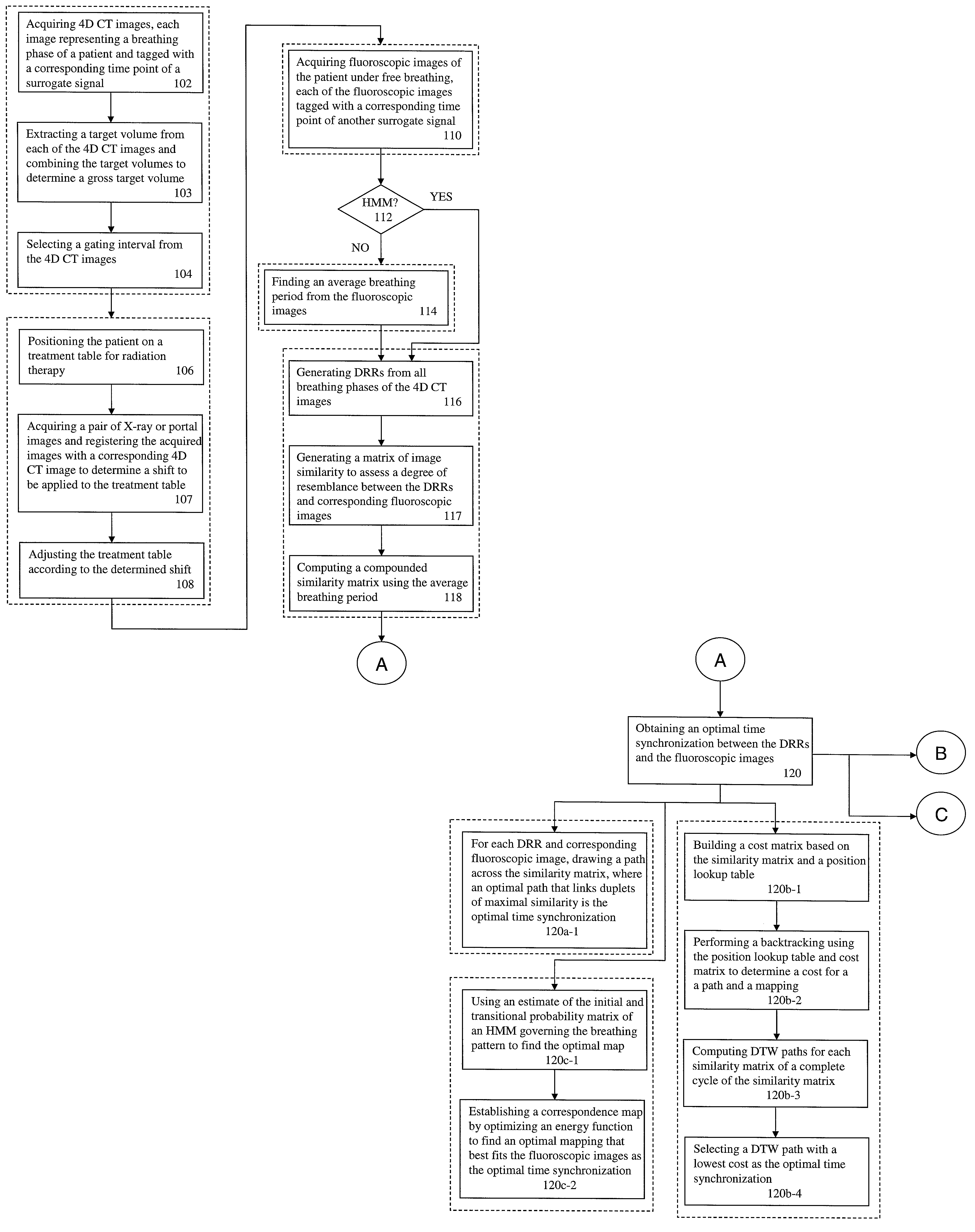Four-dimensional (4D) image verification in respiratory gated radiation therapy
a technology of image verification and applied in the field of four-dimensional (4d) image verification in respiratory gated radiation therapy, can solve the problems of patient compliance, difficult identification of the location of the tumor, and inability to deliver the dos
- Summary
- Abstract
- Description
- Claims
- Application Information
AI Technical Summary
Benefits of technology
Problems solved by technology
Method used
Image
Examples
Embodiment Construction
[0039]In the following description, we will outline a four-dimensional (4D) image verification method according to an exemplary embodiment of the present invention that addresses the variability of the correlation between the amplitude of an external signal (e.g., a respiratory belt around a patient's abdominal or thoracic area or marker position placed on the patient's thorax) and the position of an internal target. The method is divided into four phases, which are described hereinafter with reference to the accompanying figures.
Planning Phase
[0040]As shown in FIG. 1A, during the planning phase, a 4D computed tomography (CT) acquisition of a patient is made (102). The acquisition is made under a protocol that produces time resolved volumetric images at various phases of breathing (e.g., 8-12 phases). In other words, each image represents a breathing phase during a single breath of the patient. During this time, a surrogate signal is acquired, the surrogate signal being the acquired...
PUM
 Login to View More
Login to View More Abstract
Description
Claims
Application Information
 Login to View More
Login to View More - R&D
- Intellectual Property
- Life Sciences
- Materials
- Tech Scout
- Unparalleled Data Quality
- Higher Quality Content
- 60% Fewer Hallucinations
Browse by: Latest US Patents, China's latest patents, Technical Efficacy Thesaurus, Application Domain, Technology Topic, Popular Technical Reports.
© 2025 PatSnap. All rights reserved.Legal|Privacy policy|Modern Slavery Act Transparency Statement|Sitemap|About US| Contact US: help@patsnap.com



